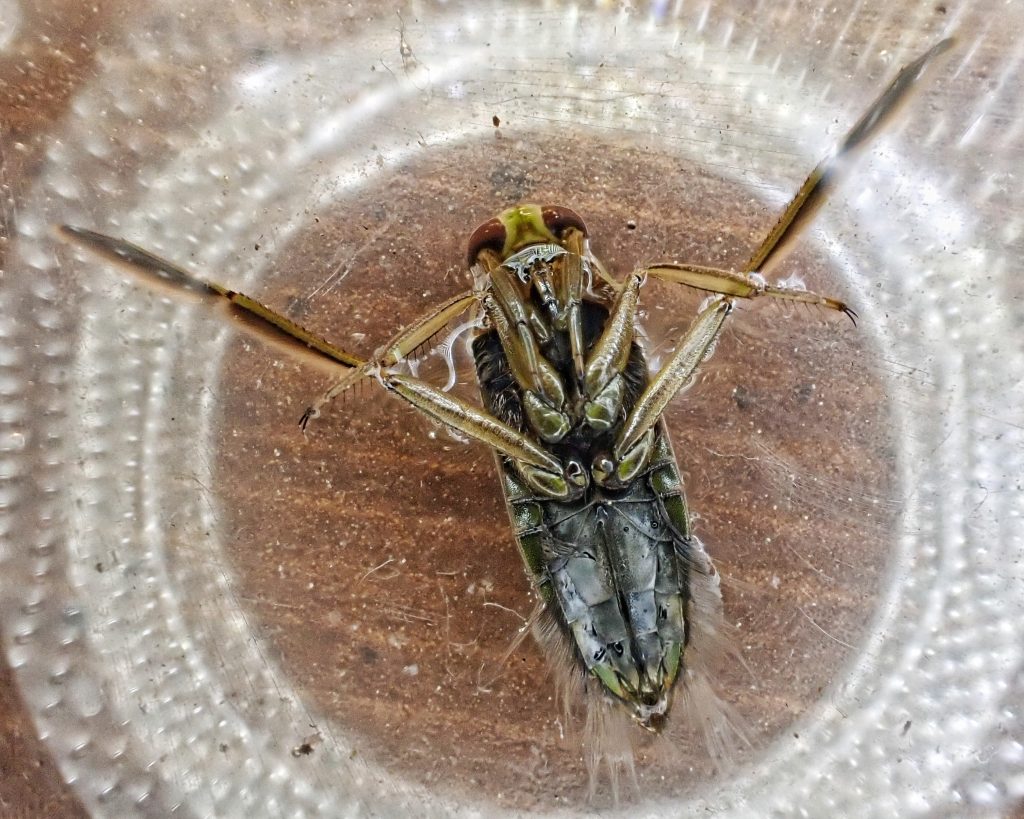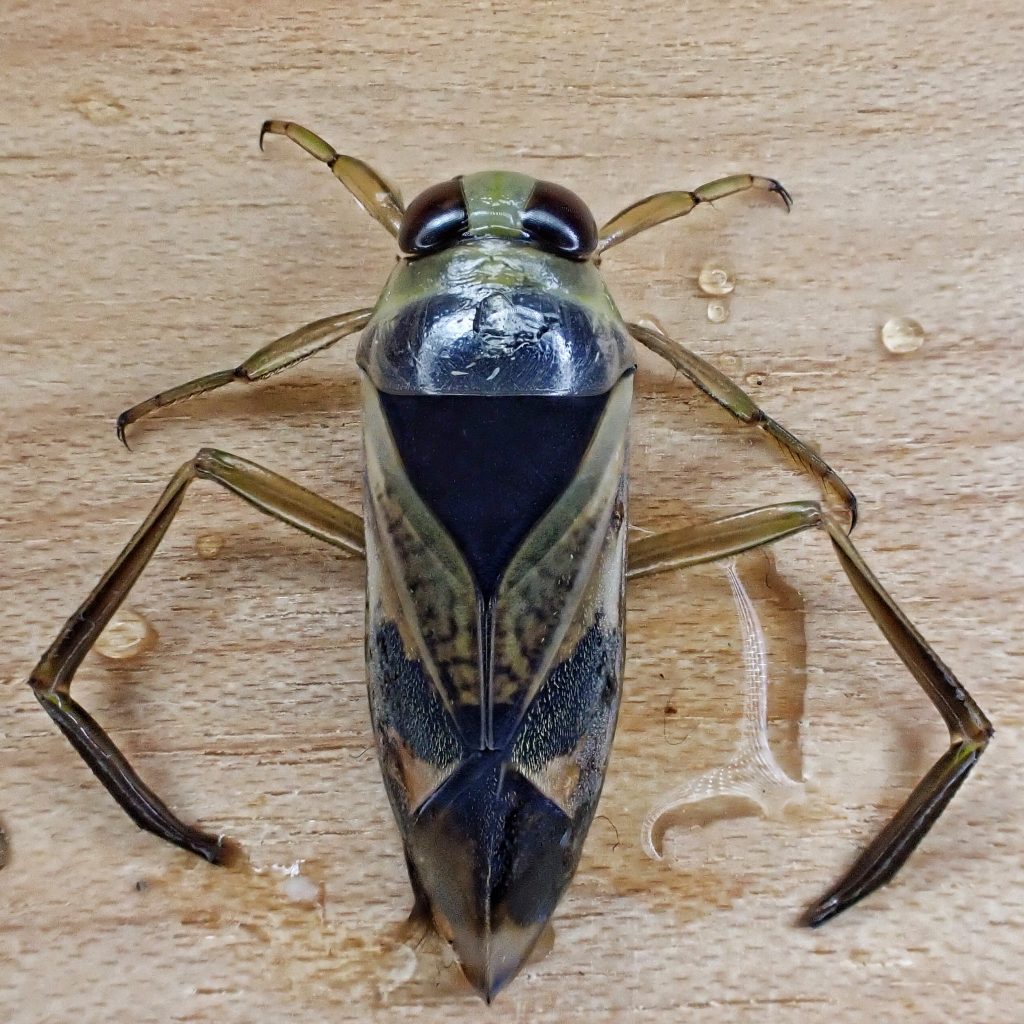
Backswimmers (family Notonectidae in the order Hemiptera) are very cool aquatic true bugs! For one thing they, as the name implies, swim upside down (which makes it virtually impossible to identify them without capturing one), which probably gives them an advantage when attacking prey from below. This is the quickest and most obvious way to separate them from the similar water boatmen (Corixidae), who also row themselves around using their oar-like hind legs, but do so right side up. Notonectids have a keel-like dorsal surface to stabilize their inverted swimming, and are lighter colored dorsally and brownish ventrally, so as to provide some camouflage when upside down. Another cool fact is that they carry their own air supply with them. They accomplish this by having a pair of channels on their abdomen that are thatched with hairs that can trap air bubbles when they breach the surface. They then utilize this stored oxygen and can sometimes remain underwater for hours.
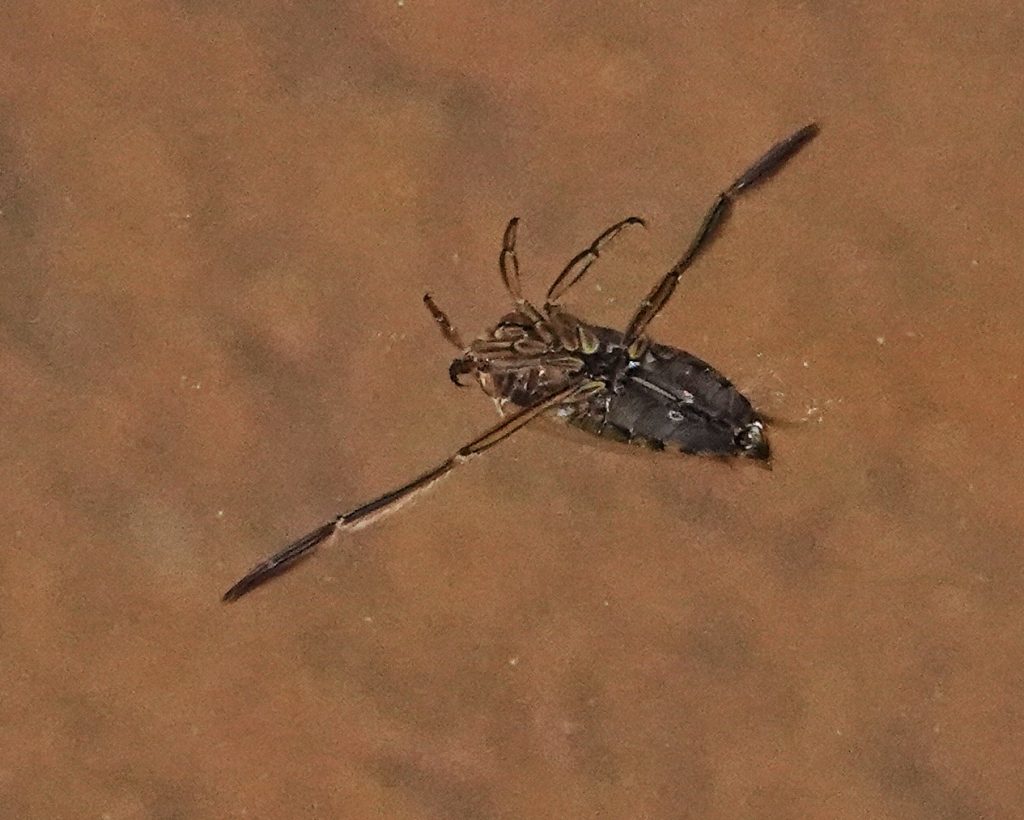
Backswimmers are accomplished predators that are known to capture fish, tadpoles, and dragonfly larvae that are larger than they are. They can do this because they don’t have to defeat them, they simply have to grasp them and hold on long enough to stab them with their beak and inject them with digestive enzymes, after which they simply suck out the resulting nutritious goo. This is also how they occasionally inflict a painful sting (this unwelcome trait has given them the nickname ‘water wasps’, although it is digestive enzymes they inject, rather than neurotoxins) on people (water boatmen do not sting people, because they are not predatory), sometimes because the are being handled incautiously, but also because they will, at times, infest swimming pools, especially of the unchlorinated, backyard variety.
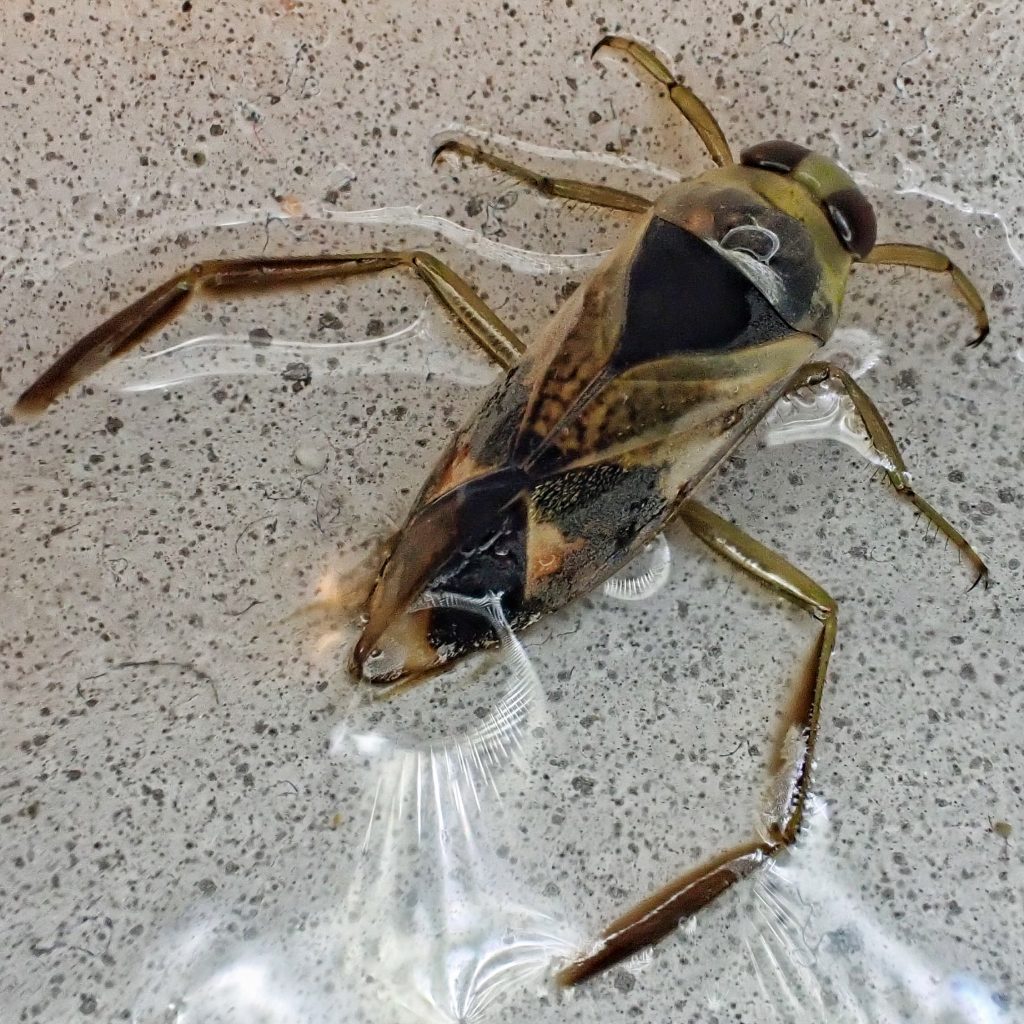
They accomplish these infestations because they can fly (although they can only barely walk on land), a trait they utilize to move from drying water bodies to one’s with more permanency. In fact notonectids have been documented as migrating en masse, and occasionally fall to the ground in huge numbers. One such ‘rain of insects’ occurred in the US in 1846 and covered an area at least 25 miles long! They also occasionally show up at outdoor lights, and at UV lights set up to attract moths, beetles, and other insects.
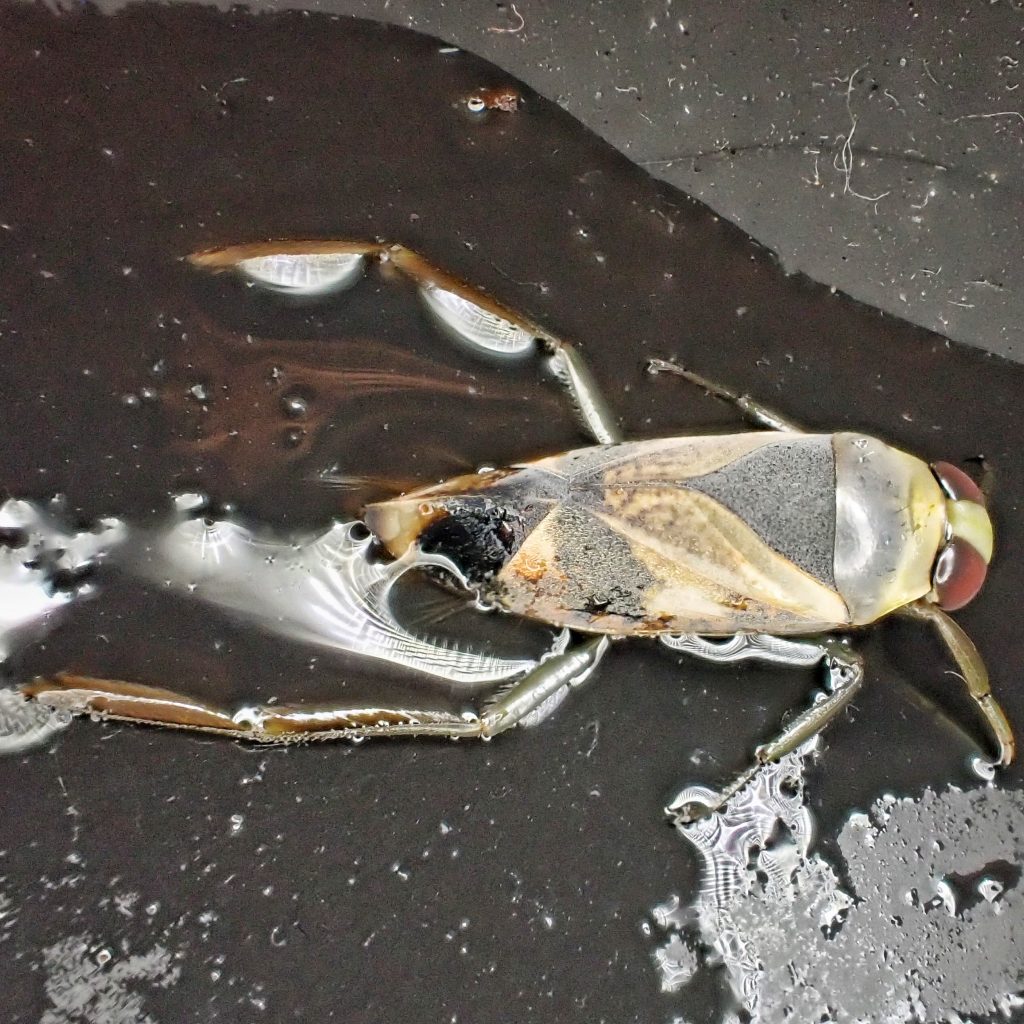
There isn’t a ton of information out there that is specific to Notonecta kirbyi, so the preceding paragraphs are true of Notonecta in general. One thing I found specific to N. kirbyi was a study (Anderson et al.; 2001) investigating the the way temperature affects the predator prey relationship between N. kirbyi and tadpoles of the Pacific chorus frog (Pseudacris regilla). They found that in cooler, early season water the tadpoles are less likely to win a battle with the backswimmers because they are small, but less likely to be caught in the first place because the backswimmer’s metabolism is slower. In warmer water the Backswimmers are very active and very quick, but the tadpoles grow rapidly then and are soon protected by their size. Always interesting to see the dynamics that help balance the relationships between predators and prey.
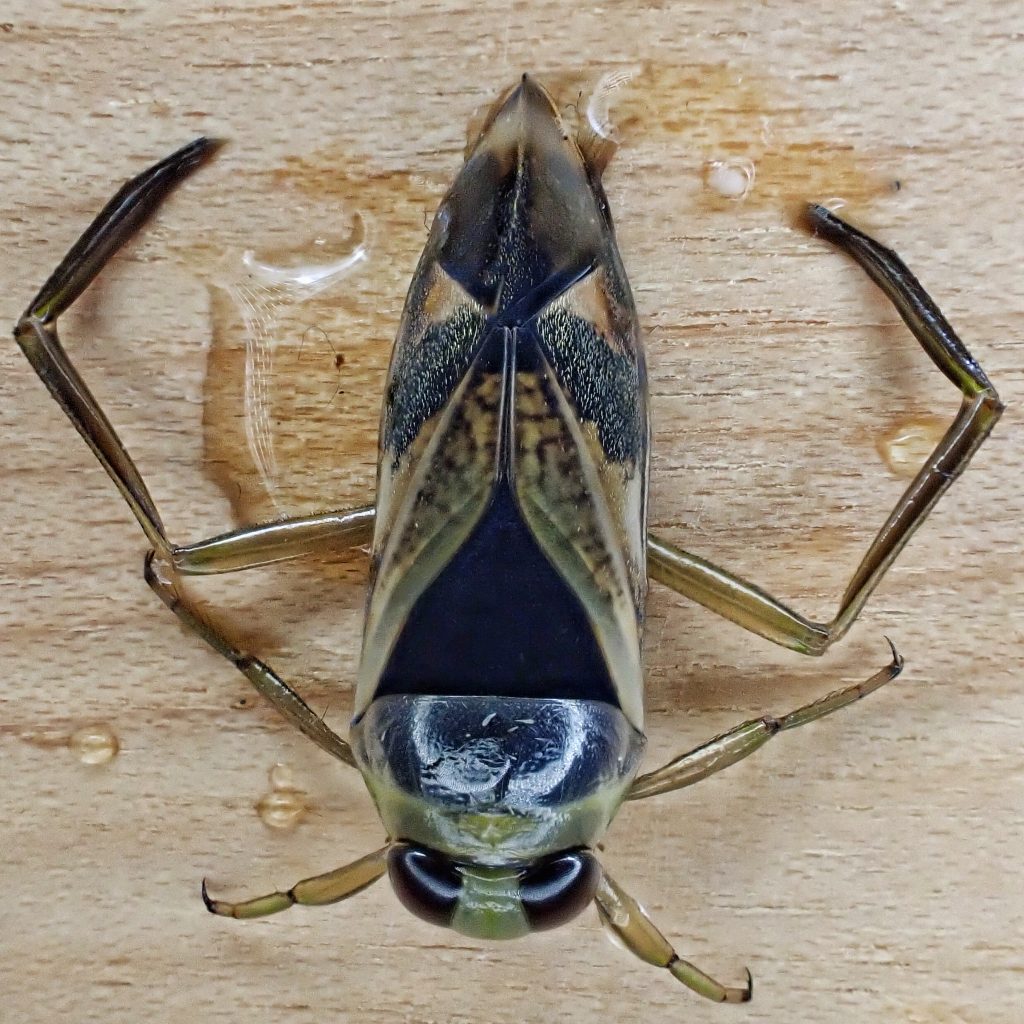
Facebook has, in its nearly infinite lack of wisdom, deemed me spam, and I cannot share anything containing my website. I can post and link, but that is a laborious process. So, I will be making the effort with this profile (since folks in my various bug groups probably didn’t see it when I said this in the profile for the pond lily Nuphar polysepala) but after that folks will need to follow my timeline, subscribe, or just check in regularly to see new posts. Sorry for the inconvenience.
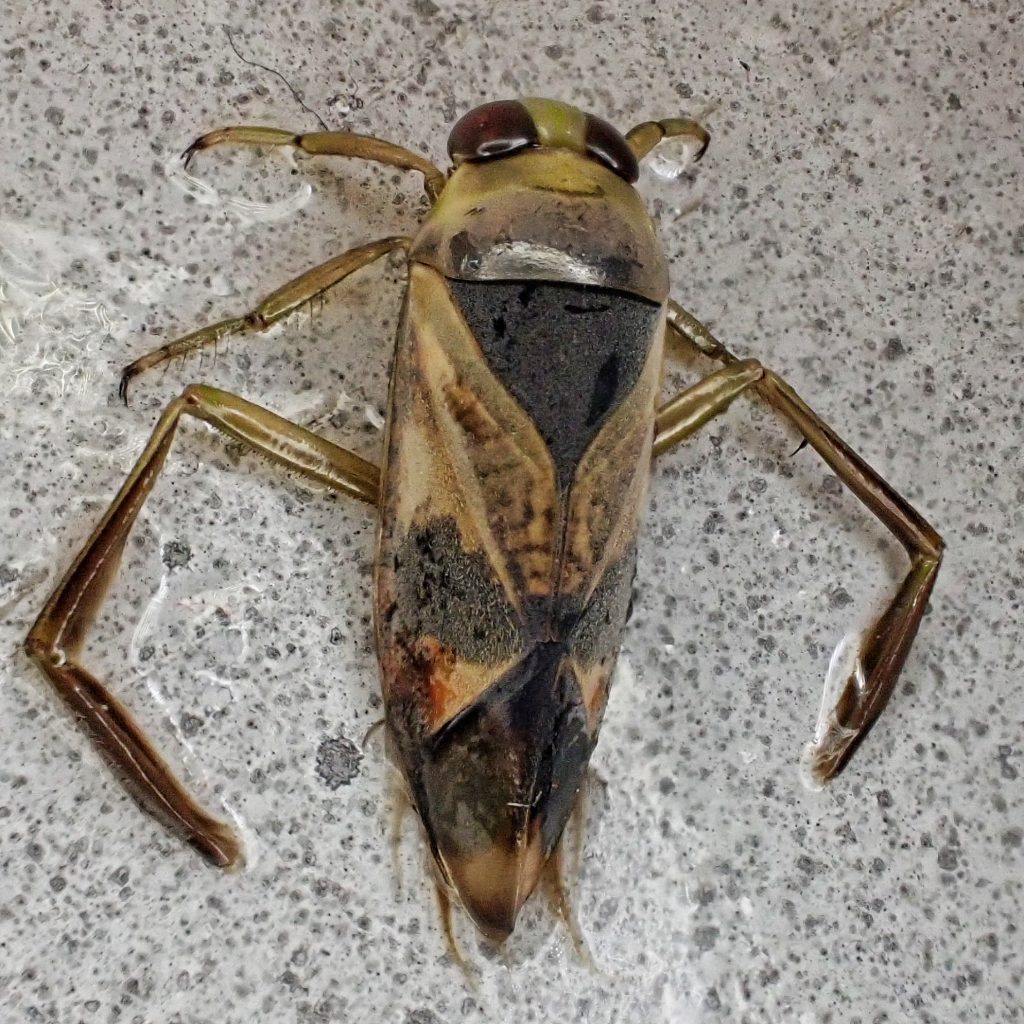
Description-Medium sized (12-15mm) elongated backswimmer, with a black scutellum, black rear of pronotum, black membrane with a lighter apex, and large but varying amounts of diffuse black mottling or speckling on the otherwise cream to tan hemelytra; pronotum shorter than, or equal to, the length of the scutellum.
Similar species–Notonecta undulata, N. unifasciata, N. spinosa all have much more extensive areas of white/cream coloration; N. shooterii has pronotum longer than scutellum; Buenoa sp. are much smaller (7mm), and have a small pit at the rear of the scutellum; Water boatmen (Corixidae) have more flattened bodies with many dark, transverse lines, and do not swim upside down.

Habitat-Still to stagnant ponds, sloughs, and backwaters, sometimes in persistent puddles, birdbaths, and buckets, and often found in unchlorinated pools.
Range-Some resources say northern North America, but all of the records I can find are from western North America; probably region wide in appropriate habitat, but seem to be more common west of the Cascades.
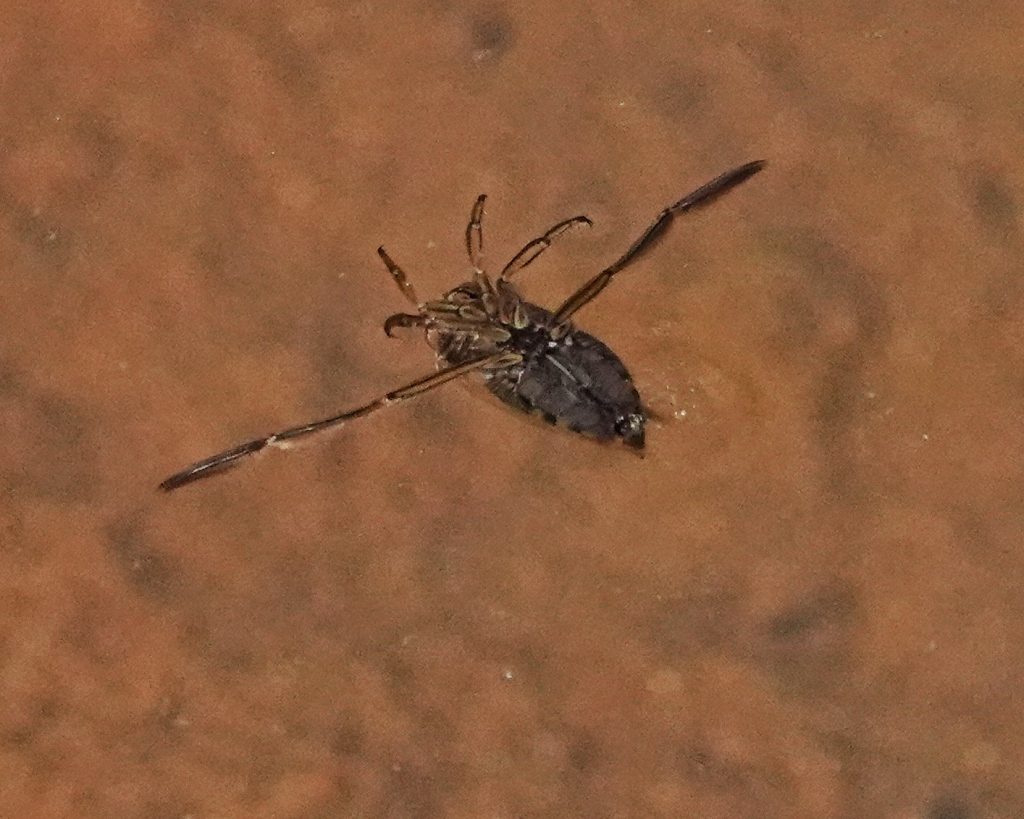
Eats-Nymphs feed primarily on tiny crustaceans such as branchiopods, ostracods, copepods, and cirripeds, and on small insect larvae such as midges and mosquitoes ; adults are predators of most anything the can catch and subdue, including ants, beetles, bloodworms, nymphs of their own species, and tadpoles and small fish that are larger than themselves.
Eaten by-Dragonfly and damselfly nymphs, giant water bugs (Belostomatidae),water scorpions (Nepidae), and predaceous diving beetles (Dytiscidae); occasionally eaten by fish and birds.
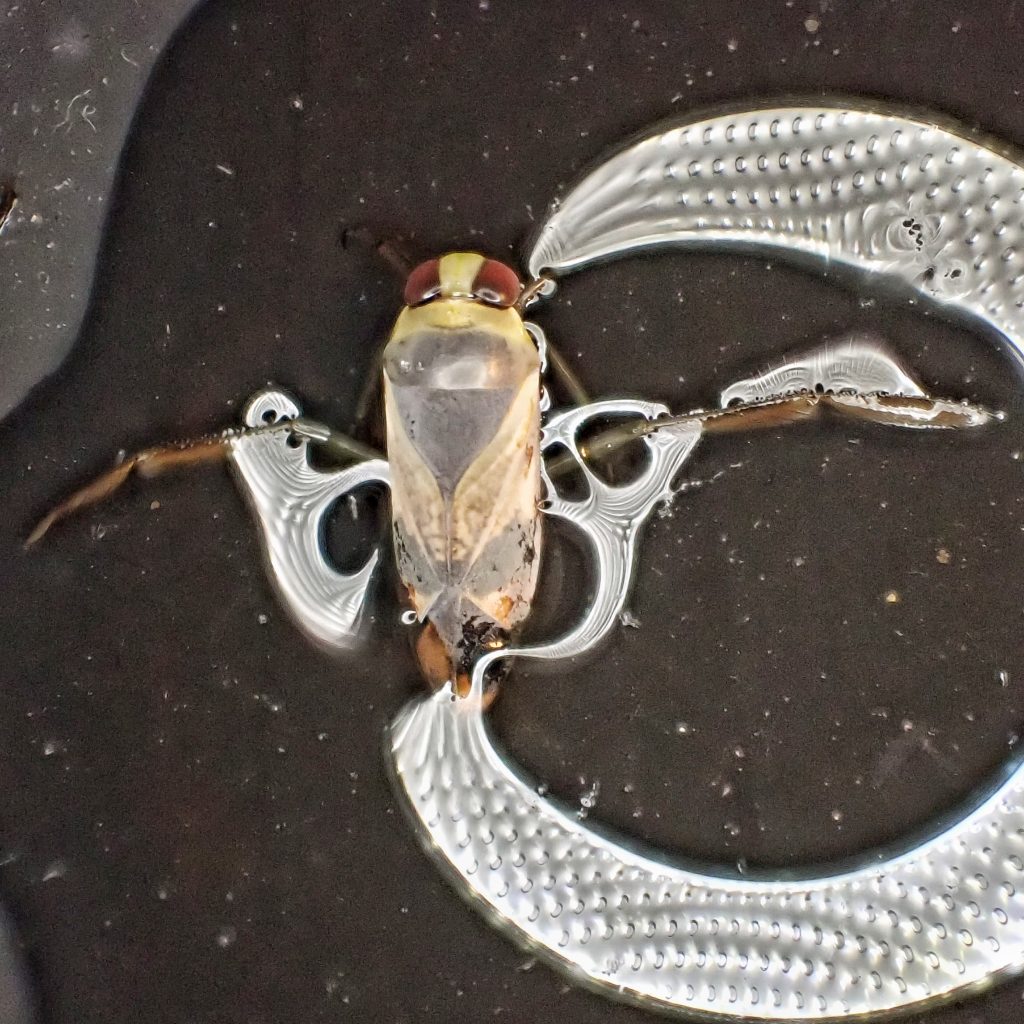
Adults active-Possibly year around, at least in warmer areas, but most active from April through September.
Life cycle-I can’t find anything specific for this species, but based on other Notonecta it is probable that they are univoltine, eggs are affixed to aquatic vegetation with mucilage, take 3-4 weeks to hatch, and mature in 7-10 weeks; apparently overwinter as dormant adults buried in the substrate (although there is anecdotal evidence of seeing them active beneath ice), but it is possible they may also overwinter as eggs in diapause.
Etymology of names–Notonecta is from the Greek words for ‘back’ and ‘swimmer’, referring to the tendency of these bugs to swim upside down. The specific epithet kirbyi probably honors William Kirby (1759-1850), who has been called the ‘Father of Modern Entomology’, since he was the describer of the closely related N. insulata, but I cannot find corroboration for this idea.
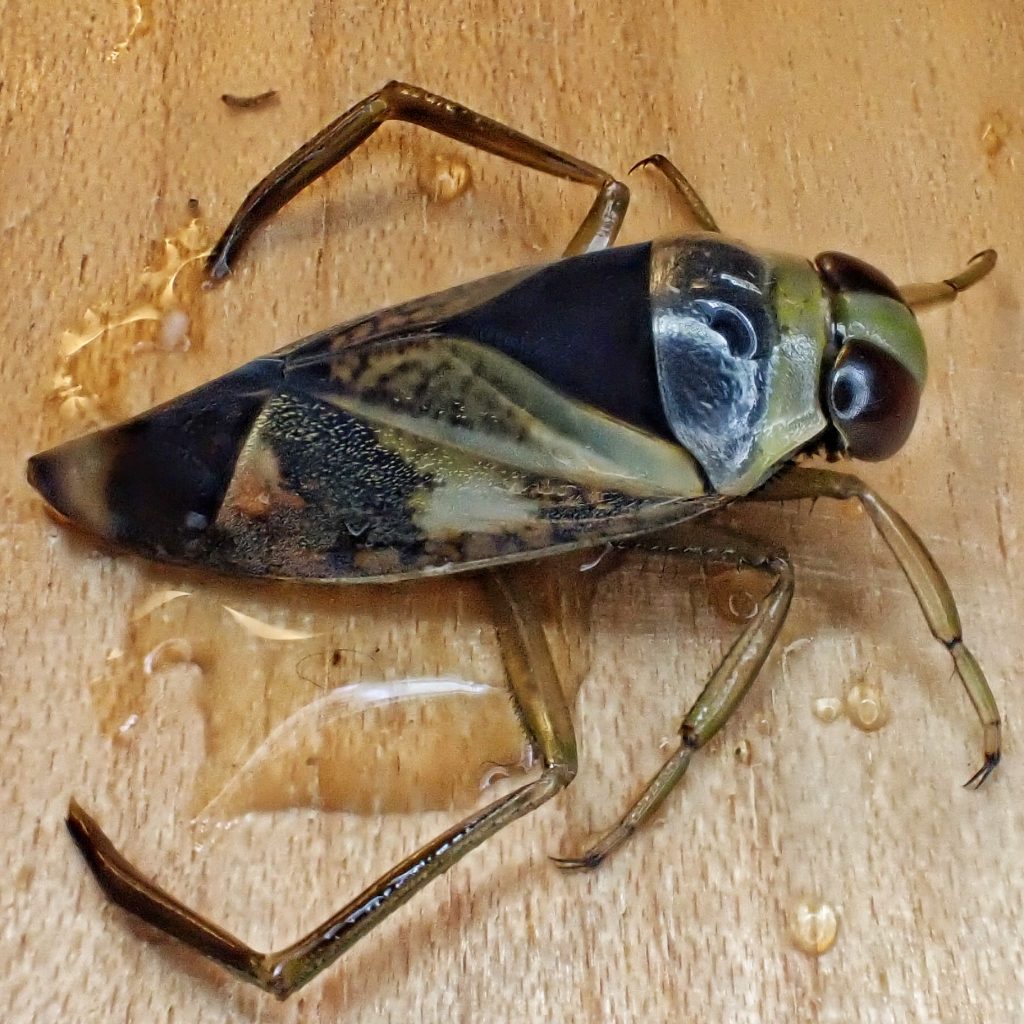
Species Notonecta kirbyi – BugGuide.Net
v.21 (1933) – The University of Kansas science bulletin – Biodiversity Heritage Library
https://www.thoughtco.com/backswimmers-family-notonectidae-1968625
https://www.jstor.org/stable/3671183
Backswimmer Facts & Information 2022 (Notonectidae) – Pond Informer
https://bugguide.net/node/view/17932
https://en.m.wikipedia.org/wiki/William_Kirby_(entomologist)
